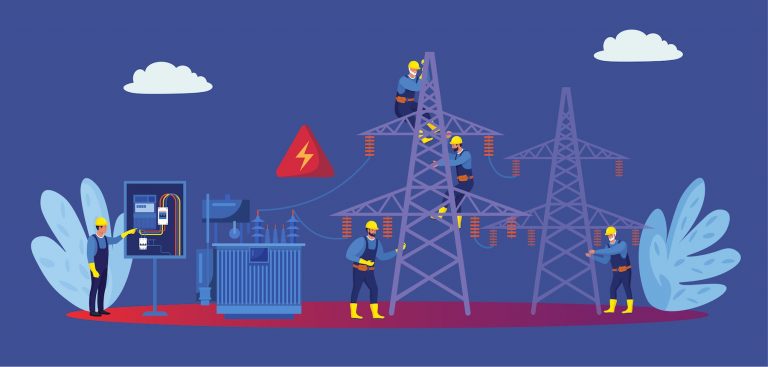News
Identifying U.S. Power Grid Disruptions with Broadband Networks

When the power goes out, utility companies are not always aware of the outage until they receive notification from customers. However, broadband operators are aware. In fact, broadband operators likely know when and where power is out before utility companies. It’s this premise that initiated the recently completed Situational Awareness of Grid Anomalies (SAGA) project in partnership with the U.S. Department of Energy’s National Renewable Energy Laboratory (NREL).
The SAGA project was created to assist utilities (and our government) in finding real-time insights and patterns of grid cyber incidents that affect power availability and quality, distribution system resiliency and electric service restoration. The project, which utilized data from CableLabs subsidiary, Gridmetrics, combined visual analytics, machine learning and human decision support to enhance distribution grid visibility and operational situational awareness. Built on power system tools developed at NREL, Gridmetrics data and other geospatial data, the project leveraged existing broadband infrastructure to demonstrate a disruptive technology for power system data analytics. The result is an advanced system that allows utility system operators to see a comprehensive overview of power activity across the U.S.
Improving Power Grid Monitoring and Resilience with Broadband Network Integration
Consider the scenario whereby a bad actor is able to compromise devices that interact with the power grid, such as smart thermostats, hot tubs, hot water heaters or even electric vehicle chargers. In this case, our siloed utilities would each respond to the sudden increased demand for power without realizing that this was a coordinated attack aimed at creating a disruption on the power grid. It is power grid hacking jujitsu. Recall, there are over 3,200 operating entities responsible for delivering the last mile of power. No one utility would see the big picture. This is precisely a scenario that SAGA worked to address.
Conducted over a three-year period, with a four-month documentation and reporting period, the SAGA project consisted of three main research thrusts: visual analytics, cyber-physical power system simulation and anomaly detection.
Visual Analytics: To help users understand, explore and analyze grid sensor data, the NREL and Gridmetrics teams designed and prototyped a web-based platform that connects to the project’s three core data services: metadata, near real-time data streams and historical data batches. The current platform allows users to visualize where Gridmetrics sensors are located and their proximity to infrastructure assets in real time. This sensor data empowers utility system operators to see which areas are affected by power performance and where to address the situation to fix it.
Cyber-physical Power System Simulation: Cyber-physical power system simulations are essential to creating a risk-free lab environment to test cyber-relevant events. Dynamic and steady-state cyber-physical power system simulation tools imitated and analyzed the behavior of power systems in real time. Creating a realistic representation of the power grid allowed teams to identify patterns, trends and anomalies to better understand how power systems behave and prevent future cyber threats against the system.
Anomaly Detection: Using the simulation data from cyber-physical power system simulations, the research team successfully demonstrated how system operators can use the sensor data to predict and detect issues that may arise. Each Gridmetrics sensor has a built-in prediction model. Using historical data and machine learning, assuming the system will operate under normal conditions, the sensor can estimate the expected value or range of the associated Gridmetrics voltage. When a sensor detects a deviation between the incoming and the expected voltage, an anomaly is captured. Anomaly detection can prevent future outages, reduce maintenance costs and improve overall system performance.
SAGA Project Learnings and Improvements
Through the SAGA project, Gridmetrics learned that in order to see more grid cybersecurity benefits, it must enhance sensing beyond the hundreds of thousands of existing broadband power sensors already in service. Improving grid sensing with higher fidelity sampling rates, measurement accuracy and GPS time stamping would allow this project to expand and promote widespread commercial availability of secondary distribution grid voltage and phase angle data.
The team proposed and completed a simultaneous technology commercialization project, which was funded by the U.S. Department of Energy (DOE) Office of Technology Transitions, Technology Commercialization Fund (TCF). During the TCF project, NREL and CableLabs collaborated to implement high-fidelity power grid sensors, built prototype sensors and tested them in the field — all within the timeline of the SAGA project.
What's Next for Our Energy Grid?
Gridmetrics continues accelerating its efforts to improve the quality and scale of data it can provide to customers. At the start of the project, Gridmetrics could only supply data from about 6,000 sensors but now has access to over 315,000 sensors and is working to access the majority of the 650,000 U.S.-based sensors over the coming year. Gridmetrics also aims to increase the fidelity and frequency of sensor reading to enable a real-time, continuous state of the grid. Gridmetrics has the potential to further develop the SAGA project to support additional DOE offices and priorities.
By combining two distinct domains — power and broadband — the SAGA project increases the power grid's resiliency by integrating existing in-service broadband networks that already pass within 1,000 feet of 90% of homes in North America.
In the face of increasing cyber risk and challenges involving the integration of distributed renewable energy sources, NREL and CableLabs’ partnership continues to increase the resilience of the power grid and broadband services. Gridmetrics’ ambition is to create a more secure and reliable power grid by providing a unified view that allows utility system operators (and our government) to better analyze and understand the distribution grid. For more information, please read the peer-reviewed SAGA paper.


